
In-Car Tech Trends: The Hottest Car Accessories for 2023
Image Credit: Chil Vera / Pixabay
The technology available in cars today would be unrecognizable to people from just a generation ago. In fact, some of the advanced technologies offered today would have been hard to believe only a few years ago – which speaks to just how quickly this market moves and how many great features and products are now available to the public.
It’s easy to be overwhelmed by the pace of changing technologies in vehicles, as it seems that something new is coming out with each passing week. To help you get up to date on the latest and greatest in this space, we’ve collected an informative overview of this market sector below. Let’s get started!
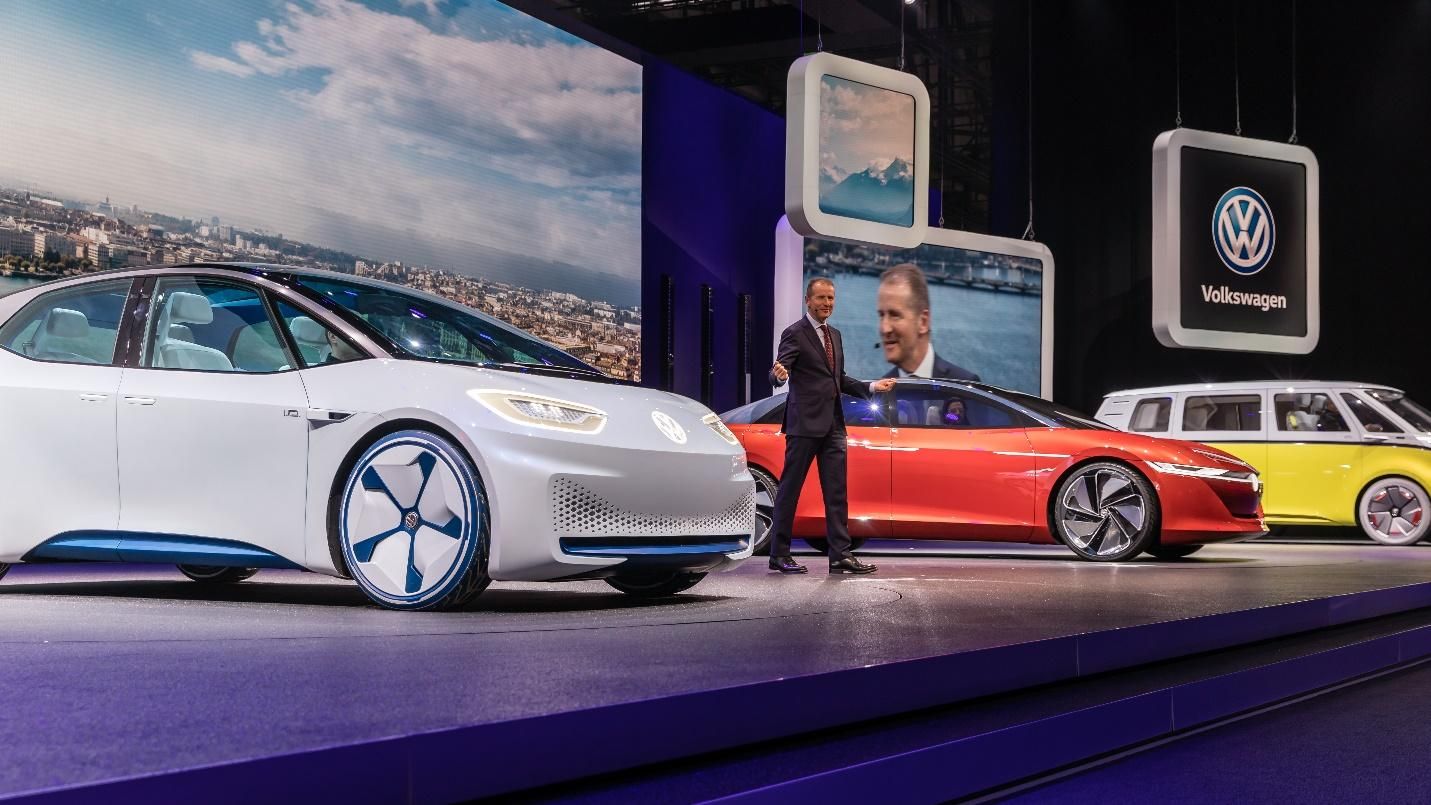
Image Credit: Matti Blume - Own work, CC BY-SA 4.0
The Importance of Keeping Up with In-Car Tech Trends
At a basic level, the only thing your car needs to do for you is get you from one place to another. If you get where you need to go, you might consider your vehicle to have done its job.
With that said, keeping up with in-car tech trends can make the experience of being a driver or passenger far more enjoyable. Not only does good technology make cars and trucks more fun to use, but they can also be made safer with the right accessories. In this way, it’s important to keep up with the trends so you are taking advantage of the latest and greatest features that are available to today’s drivers.
Whether you are a daily commuter or someone who racks up a lot of miles on long road trips, you’ll find that the time you spend in your vehicle will feel less like a chore and more like a privilege when you have modern technology in place.
Top In-Car Tech Trends for 2023
Some of the technologies available in cars today are simply incredible. As mentioned above, modern technology can make cars safer and make them more enjoyable – and improvements in either of those two categories are well worth pursuing. Let’s take some time to look at five current trends in in-car technology that are going strong in 2023 and are likely to continue to gain momentum in the years ahead.

Image Credit: Jaguar MENA / flickr
#1 - Advanced Driver-Assistance Systems
One of the biggest topics in the automotive world in recent years is the capability of vehicles to actively help their drivers. In the past, the ways the vehicle could help the driver were more reactionary in nature – like airbags. The system would help limit the damage of a crash by deploying airbags to help protect the driver and front seat passenger, but only after a crash had occurred. With advanced driver-assistance systems, or ADAS, the vehicle itself takes on more responsibility and starts to actively help the driver avoid trouble.
There are many different types of technologies that can be included in the category of ADAS. A couple of examples that have been around for a long time and aren’t considered particularly high-tech at this point are anti-lock brakes and adaptive cruise control. Each of these can help vehicles stay safe while on the road, and they are relatively common throughout the industry.
Newer tech trends that are starting to show up in more and more vehicles often have to do with augmenting the driver’s ability to see what is happening around the car. Forward collision warning systems are just this type of technology. In a vehicle with a forward collision warning, the car or truck will be “watching” what is going on in front of it and will alert the driver if they are approaching something in front of them too quickly. So, if the driver looks away for a moment as traffic suddenly stalls or another vehicle cuts in, the forward collision warning will activate and alert the driver appropriately.
Even the most attentive, careful driver is still a human, and humans are prone to mistakes. Whether that mistake is due to fatigue, distraction, or something else entirely, having ADAS in place to lend a helping hand and avoid disastrous consequences is a great advantage. And, as more and more advanced pieces of technology come onto the market, it’s certain that ADAS will be able to do even more to keep everyone safe.
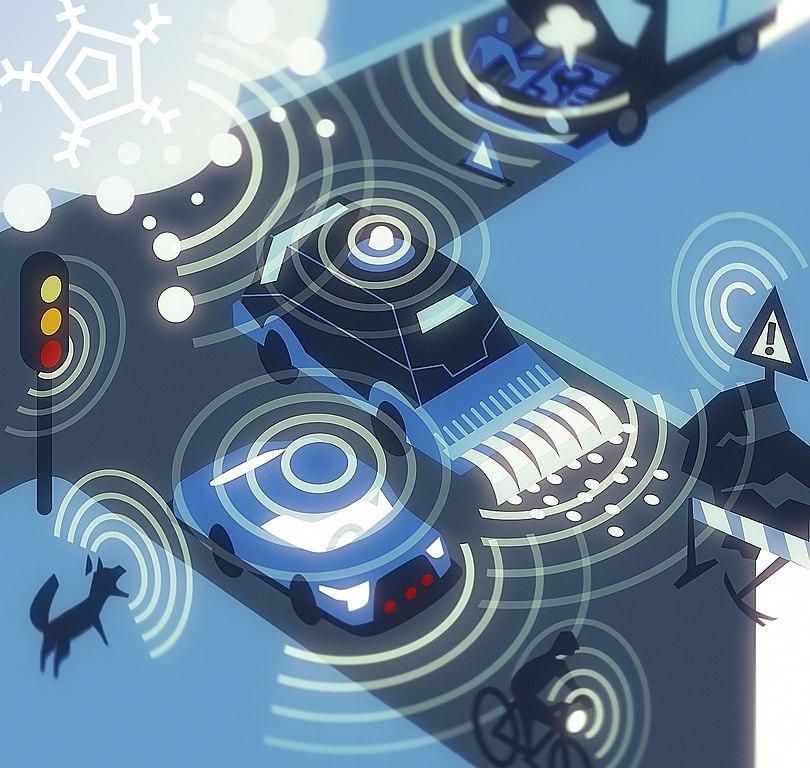
Image Credit: Hans-J. Brehm, CC BY-SA 4.0, / Wikimedia Commons
#2 - Vehicle-to-Everything Communication
Modern vehicles are incredible computers on wheels. There are countless sensors, cameras, and other gadgets on most new vehicles, and the availability and prevalence of such technologies is only increasing with each passing year. However, as it currently stands, these sensors and cameras operate in isolation, each serving its own vehicle but not ranging out beyond that to connect with anything else on or around the road.
Vehicle-to-everything communication, also known as V2X technology, promises to change that moving forward. If V2X becomes the standard on the road, the sensors, cameras, and other devices on vehicles won’t be in a bubble, but rather they’ll work together with each other to pass information around instantly. Such capabilities would have a meaningful impact not only on the safety of the roads but also on the efficiency of traffic.
Let’s consider an example of how this technology could work to help improve safety. In the future, it will likely be possible for vehicles to wirelessly connect with smart traffic lights that are placed on streets throughout the country. So, as the vehicle starts to approach an intersection, it will be able to pick up a wireless signal from the traffic light and provide the driver with information about when the light is going to change. This could avoid last-second braking or accelerating decisions and would likely lead to a significant reduction in accidents.
Communication between vehicles, like what happens with the forward collision warning systems we mentioned in the previous section, also has the potential to dramatically reduce the frequency of car accidents. There are still plenty of technological hurdles in the way of having true V2X capability across the roadways, such as the number of older model vehicles still in use that doesn’t have any modern technology onboard, but the shift toward this driving experience should be steady, if not swift.

Image Credit: VicenSanh / Stock.Adobe.com
#3 - Augmented Reality Dashboards
While the technology is extremely advanced and complex, the concept behind augmented reality dashboards is quite simple. The idea here is that the driver should always be looking at the road, keeping his or her eyes on the action in front of the vehicle. So, anything that requires the driver to look away can be seen as a safety hazard.
With an augmented reality dashboard, the information the driver needs are delivered directly to an AR display in front of the driver, making it possible to get information without glancing down or to the side. Considering how fractions of a second can make a big difference in terms of safety on the road, cutting down on looking elsewhere is a huge step forward.
Many different types of information can be incorporated into an augmented reality dashboard, and there is a close connection between this type of technology and the advanced driver-assistance systems we mentioned earlier. With a connection of information across a wide-ranging network, the vehicle can pick up valuable info from many different sources and condense it down into a tidy package that can be added to the head-up display and consumed by the driver in just a fraction of a second.
Navigation is one of the many practical applications of augmented reality dashboards. Rather than looking down at the screen of a phone for information about where to turn next – or even looking at a screen built into the dashboard – that navigational information can be added to a HUD to put it right in the driver’s field of view. This way, it will be simple to see where the next turn should be made, and the driver’s attention won’t need to be diverted for even a moment. Many other uses for this technology are possible, as well, such as providing drivers with important updates on dangerous weather conditions approaching, information about parking rules in cities, and much more.
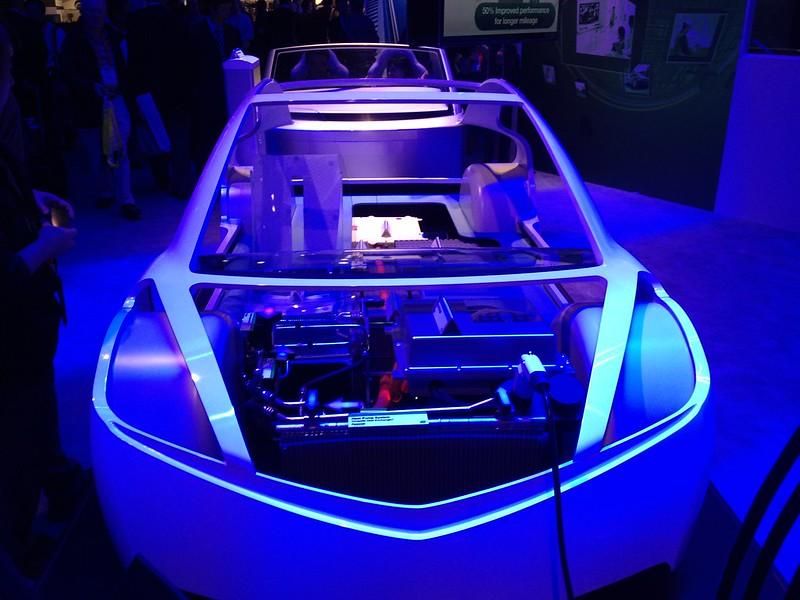
Image Credit: Kevin Krejci / flickr
#4 - Electric Vehicle Technology
Electric vehicles continue to rapidly claim a larger and larger share of the automotive market. While EVs have been around, in one form or another, for quite some time, they are really gaining traction recently and seem poised to become the dominant player on the roads in the years ahead. With that said, there are still hurdles to be cleared, and some of those hurdles are being conquered by new technologies coming into this space.
For electric vehicles, most of the important technological advancements that need to be made are in batteries and charging. Few people need convincing that electric vehicles can perform as well or better than those powered by an internal combustion engine – EVs are plenty quick and can reach impressive top speeds. However, it is range limitations and charging complications that give some people hesitation to make the jump into this market. So, as battery and charging technologies take strides forward, so will the willingness of the average consumer to make a purchase.
One exciting area of advancement is in wireless charging. Most people are used to charging their phones this way, but it might seem like a fantasy to charge an EV without plugging it in. However, wireless charging testing has been moving forward and making more and more progress recently. The most interesting form of wireless charging is in-road charging, which is exactly as it sounds. The roadway itself will have the ability to deliver electricity to the vehicle, without that vehicle even coming to a stop. It will take time to see if this method can work, and then for it to become widespread, but such a system would make EVs incredibly convenient and reliable, even for long trips.
Also, a different type of battery is starting to pick up more and more attention in this space. The use of lithium iron phosphate batteries could be another notable step forward because they are able to charge faster than the typical batteries that are used in most EVs. Whether it’s lithium iron phosphate or another type of battery that winds up becoming the most viable option moving forward is yet to be seen.
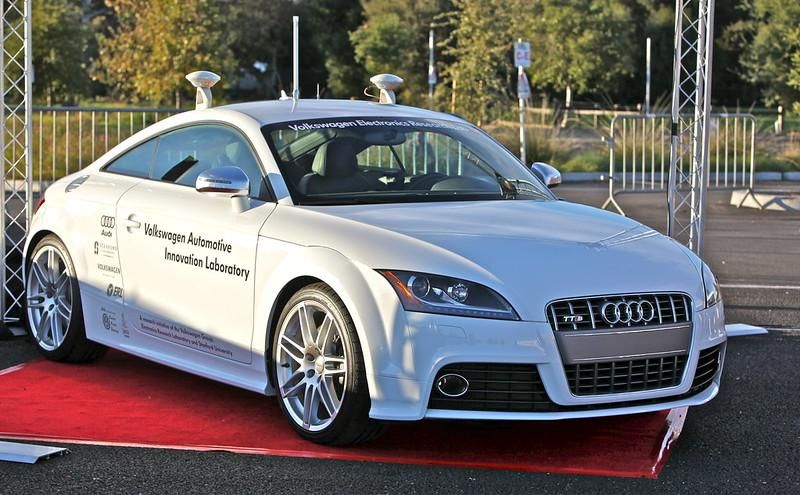
Image Credit: Steve Jurvetson / flickr
#5 - Autonomous Vehicles
Of all the in-car tech trends that you have heard about on the news or online, it’s likely that autonomous vehicles are the most notable. While all the technologies above have the potential to make significant impacts, nothing would change the game on the roads quite like having cars that can drive themselves.
So, how close is that possibility to becoming a reality? Well, to be sure, technology already exists. Various vehicles already come equipped with some self-driving, autonomous features, although that does not mean they are able to take you completely from one point to another with no human input. Autonomous vehicles are being used as driverless taxis, with mixed results in some big cities.
The challenging thing about the state of autonomous vehicles in 2023 is that while the technology is incredible, it needs to be essentially perfect before it can enjoy widespread adoption. Even relatively minor mistakes can lead to horrible outcomes on the road when a computer oversees a vehicle. A single mistake by the onboard system due to changing weather conditions or another variable could end in a dangerous crash. Even if a crash is avoided, problems with the system could lead to traffic issues, people getting lost, and other undesirable outcomes.
With all of that said, there are impressive uses for autonomous driving capabilities that are already in relatively widespread use. Parallel parking is a great example of how this technology can be leveraged to solve a common problem. Successfully parallel parking in a tight space is something that many drivers struggle to do, especially in cities where there isn’t much room to maneuver – and the vehicles waiting behind might not be particularly patient. In a vehicle that has an autonomous parallel parking function built-in, the driver can simply press a button, sit back, and the car will move into place.
Hottest Car Accessories for 2023
If you already own a vehicle that you are happy with, there isn’t much you can do about the onboard technology that is built into that car or truck. At some point, the time will come to upgrade to a new vehicle, but for now, you might want to look toward aftermarket accessories to add to your ride. Toward that end, we have picked out three accessories below that are worthy of your consideration.
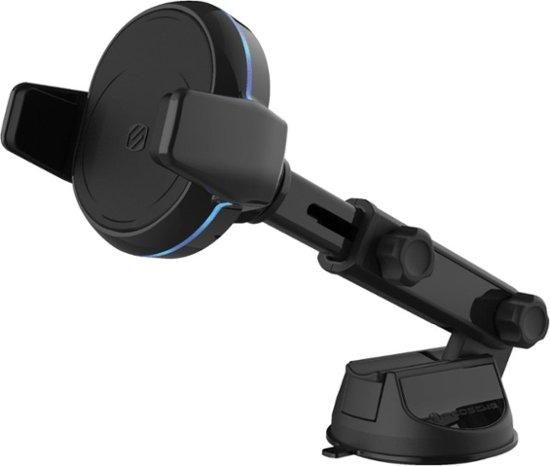
Image Credit: BestBuy
#1 - Wireless Charging Mounts
For many people, spending extended periods of time in their vehicle is a daily occurrence. Plenty of workers face an hour commute to the office each morning, which means they need to drive another hour after work to get home. With two hours or more in their car or truck at least five days per week, it only makes sense to make the cab of the vehicle as functional and convenient as possible.
One of the ways to do just that is by adding a wireless charging mount. These accessories are becoming more and more popular as they are a big step up in convenience from having to plug in a cord each time you want to charge. Just like wireless chargers used around the home, all that is needed is to set the phone onto the front of the charger and it will start to pick up juice as you drive along. This not only solves the problem of reaching a destination only to find that you have no battery power left, but it also gives you a convenient place to set the phone while in transit.
Wireless charging in a car works just the same way as wireless charging in any other application. An electromagnetic field is created between the charger and the receiving device – in this case, a smartphone – and that field is used to transmit energy from one to the other. The speed of charging will depend on both the charger you select and the phone you own, but most devices will charge up quickly with this setup.
It's easy to overlook the value of wireless charging mounts in terms of the hands-free experience they provide. Yes, the charging capability is nice, but a big piece of what these gadgets deliver is the ability to hold and display your phone in a convenient place while you drive. This is particularly useful when using your phone for navigation. In most states, it’s illegal to hold onto your phone while driving, so using a mount to put it somewhere easy to see makes a ton of sense. And rather than having that navigation app drain your battery along the way, you’ll be picking up charge while getting where you need to go.
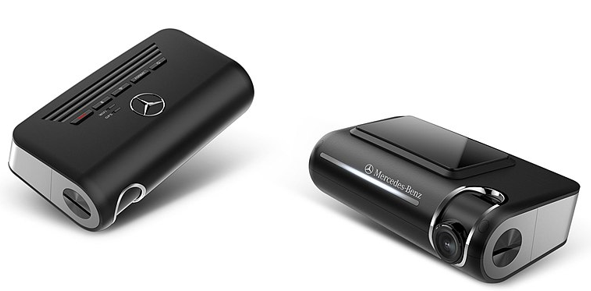
Image Credit: Aidan at ThinkwareNA, CC BY-SA 4.0, / Wikimedia Commons
#2 - High-Definition Dash Cams
The idea behind high-definition dash cams is very simple. Every day, countless interactions happen on the roads, and not everyone agrees on how those interactions went down. If you are involved in an accident or some other issue on the road, having a dash cam could provide you with the evidence necessary to prove your side of the case. Thanks to rapid advances in video technology, modern dash cams can capture incredibly high-quality video while taking up only a small space within your cab.
Once installed, your new high-definition dash cam will simply record on a loop anytime it is turned on. So, if you settle into the driver’s seat for a commute to work, you can switch on the cam, and it will be capturing everything that happens along the way. Most of the time, nothing notable will take place, and you’ll simply turn the camera off when you arrive. However, if something does happen that you want to review, you can take the footage off the cam and save it to your preferred location. Many models can sync with your phone, and some have advanced features like the ability to automatically switch on when an impact is detected.
Perhaps the primary purpose of having a dashcam is to accurately demonstrate what happened in the event of a crash. This could go a long way toward having an insurance claim outcome play out in your favor, or it might even pay off if you decide to take legal action against another driver. There won’t always be witnesses available to give an independent recounting of what happened in an accident, so your dash cam recording can serve as that third party. With a clear video that shows the moments leading up to a crash, it will be hard for anyone to argue with your claims.
It's also handy to have a dash cam installed in the case of an interaction with the police. Capturing a record of what transpired when you are stopped by the police can again help give authority to your story if there is an issue that comes up where you don’t feel like you were treated fairly for one reason or another. Given the affordability and ease of use that dash cams offer, it’s easy to see why these have become some of the hottest accessories in the automotive market for 2023.

Image Credit: Alain Van den Hende, CC BY-SA 4.0, / Wikimedia Commons
#3 - Smart Car Adapters
In the average vehicle, only a small portion of the information being gathered by the vehicle as it operates is displayed to the driver. Data points like the speed of the vehicle, the RPMs, fuel level, and other basics are shown on the dash, but plenty of other components are left out. Using a smart car adapter, which is also called an OBD-II adapter, it’s possible to access far more data about your vehicle and how it is performing.
As the name would suggest, this is an adapter that plugs directly into the OBD-II port on your vehicle. This is the port that a mechanic would use to run a diagnostic check on your vehicle if it is having problems, but you can use it yourself with one of these adapters. Once in place, you’ll be able to gather large volumes of information, and that information can be sent to your mobile device either via Wi-Fi or Bluetooth.
So, what can you accomplish with this type of adapter on your vehicle? The specifics of what you’ll be able to collect will vary from model to model, but some possibilities include the following –
- Vehicle diagnostics. This is something that should apply across the board – any smart car adapter should provide you with diagnostic information about your vehicle’s performance through the onboard computer. You might be able to spot the need for some maintenance or repair faster if you use one of these adaptors and check its readings regularly.
- Trip logging. Depending on the model, you might be able to use this accessory as a tool to log your various trips. That could be interesting just for informational purposes, or you might need it for claiming business expenses on your taxes.
- Real-time tracking. Are you the only person who drives your vehicle? If not, you may want to be able to see where your vehicle is when you aren’t in it, so look for one of these adapters that offers tracking in real time. This is a handy feature for someone who manages a fleet of vehicles, or for a parent who wants to make sure a teenage driver isn’t disobeying the rules and heading off to places where they aren’t allowed. It could even be possible to track down a stolen vehicle if you have your adapter in place.
Find the Right Solutions for Your Needs
Do you need to add all the hottest car accessories for 2023 to your vehicle? Of course, not – that would get expensive, to be sure, and you probably couldn’t fit everything on the market into your car or truck, anyway. Rather than trying to get everything, think about how you use your vehicle and select the in-car tech features that are going to elevate your driving experience.
Whether you just got a new vehicle and you want to make sure it’s as up to date as possible, or you have an older model that you’d like to give a new lease on life, in-car tech is the way to go. Have fun using the ideas presented above to give your vehicle a custom, high-tech feel that will be enjoyable for years to come.
References
- Car and Driver https://www.caranddriver.com/research/a31880412/adas/
- Built In https://builtin.com/transportation-tech/v2x-vehicle-to-everything
- Autoweek https://www.autoweek.com/news/technology/a36190311/v2x-technology/
- ScienceSoft https://www.scnsoft.com/augmented-reality/dashboards
- Driivz https://driivz.com/blog/ev-charging-technology-innovations/
- Marketplace https://www.marketplace.org/shows/marketplace-tech/autonomous-vehicles-theyre-not-there-yet/
- CNET https://www.cnet.com/tech/mobile/best-wireless-car-charger-and-mount/
- U.S. News https://cars.usnews.com/cars-trucks/features/should-i-get-dashcam
- Carista OBD2 https://blog.caristaapp.com/the-truth-about-obd-adapters-e98ddf022bf8
Updated